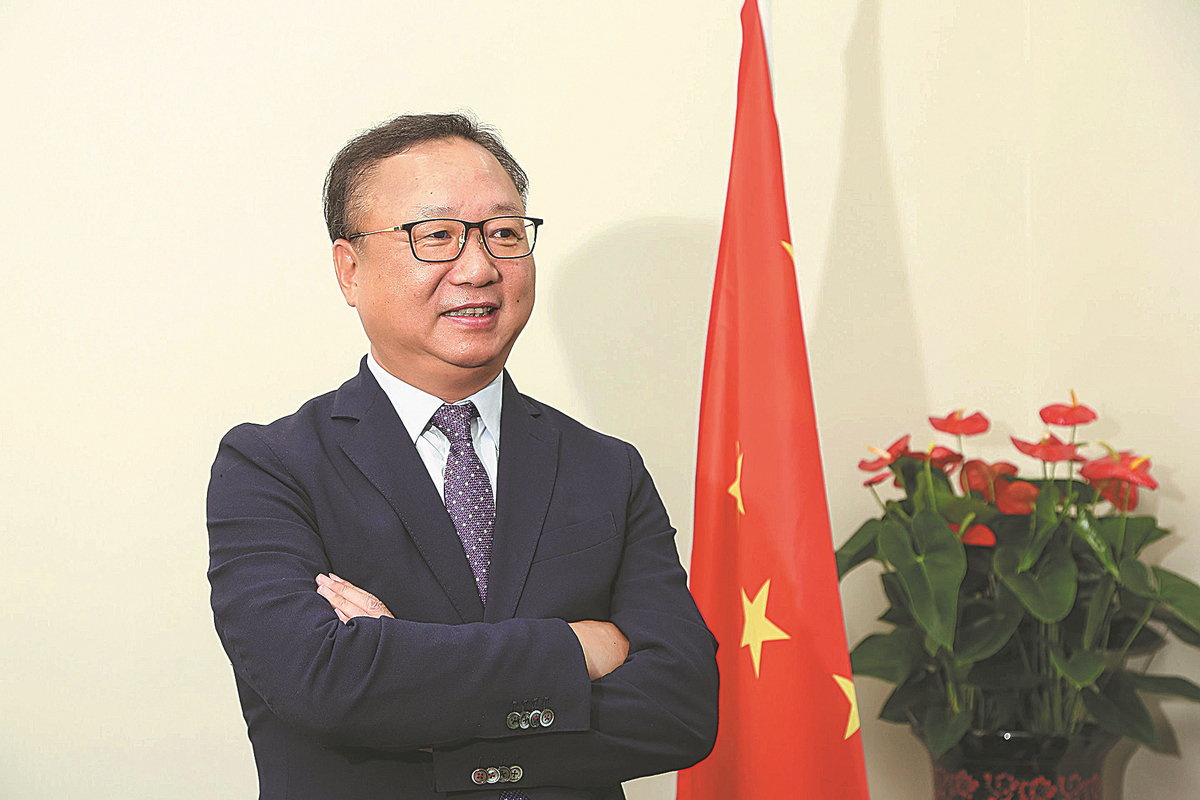RCEP weaves new relationships for apparel trade

Sun Ruizhe, president of the Beijing-based China National Textile and Apparel Council. [Photo privided to China Daily]
China's textile and apparel sector will focus on developing new fibers and green manufacturing, as well as expanding markets related to the Regional Comprehensive Economic Partnership agreement to remain competitive in the coming years, said a senior industry leader.
As the ongoing Russia-Ukraine conflict has put China's textile and garment exports to Russia and Europe under direct pressure, Sun Ruizhe, president of the Beijing-based China National Textile and Apparel Council, or CNTAC, said the growing uncertainty of global economic recovery and geopolitical issues have had a huge impact on China's textile and apparel industry.
Moreover, affected by geopolitics, the prices of commodities such as crude oil and cotton remain stubbornly high, and the profits of man-made fiber and cotton textile production shrank significantly. Also, the repeated COVID-19 pandemic waves and global divergence in prevention and control measures have weakened industrial production and logistics, which, in turn, have weakened market confidence and consumer spending.
He said that the enforcement of the RCEP agreement, which covers 15 countries in the Asia-Pacific region, will create fresh opportunities for a more comprehensive and deeper regional industry cooperation. This will hedge against the current economic and trade risks and generate strategic value for the diversification of industrial and supply chains.
Under the framework of the RCEP, over 94 percent of textile and garment products from China to other members will eventually enjoy zero tariffs after a certain period, and the number is over 95 percent for textile and garment products from other members to China.
Sun said that the tariff reduction commitments, accumulative rule of origin and trade liberation and facilitation measures will be conducive to a closer relationship between China and other countries such as Japan in textile and garment trade.
"RCEP not only covers trade in goods but also engages in economic and technological cooperation, intellectual property rights and other factors. The introduction of advanced technology, important equipment, key components and new patterns will speed up transformation and upgrading of the entire industrial chain," he said.
China's textile and garment exports soared 11.1 percent on a yearly basis to $72.25 billion in the first quarter, according to the CNTAC. The council predicted that the industry will experience a slowdown in growth in the first half, due to external factors such as weak global demand and supply chain issues.
As the bill H.R.6256 passed by the US Congress in December 2021 attempts to prevent the importation of goods produced in China's Xinjiang Uygur autonomous region into the United States, Sun said this move will hit hard on the exports of Chinese cotton textile and garment goods to the US market.
Eager to enhance its earning strength and mitigate risks, the CNTAC and its member companies have made notable progress in both basic and applied research. The industry has shifted its focus from following others to keeping pace and even leading the way. Breakthroughs in technological bottlenecks have been made in the fields of new fibers, green manufacturing and textile machinery.
The development of the platform economy and content economy has fueled the upgrading of traditional brands and the emergence of new brands. E-commerce platforms such as SHEIN and PatPat are well-known in overseas markets. The changing lifestyle and consumer behavior have brought new markets and product categories for new brands. The love of hanfu-traditional Chinese dresses-and domestic brands has heralded a new trend known as guochao, a Chinese phrase referring to homegrown style. Domestic brands have entered a high-speed growth period.
In addition to facilitating the integration of digitalization into industrial development, Sun said China's textile and garment companies will work harder on developing new markets via new technologies and the country's dual-circulation development pattern that takes domestic development as the mainstay, with domestic and international development reinforcing each other.
The US, the Association of Southeast Asian Nations, the European Union and Japan remained the four biggest export markets for China's textile and garment products in the first quarter, accounting for 54.6 percent of the country's total exports of this kind during the period, data from China's General Administration of Customs showed.
"Although many domestic manufacturers encountered fierce competition from rivals in Southeast Asia since the second half of 2021, they still have distinct advantages in design, equipment, and integration of the upstream and downstream industry chains," said Deng Lijun, chief analyst at Changchun-based Northeast Securities.


